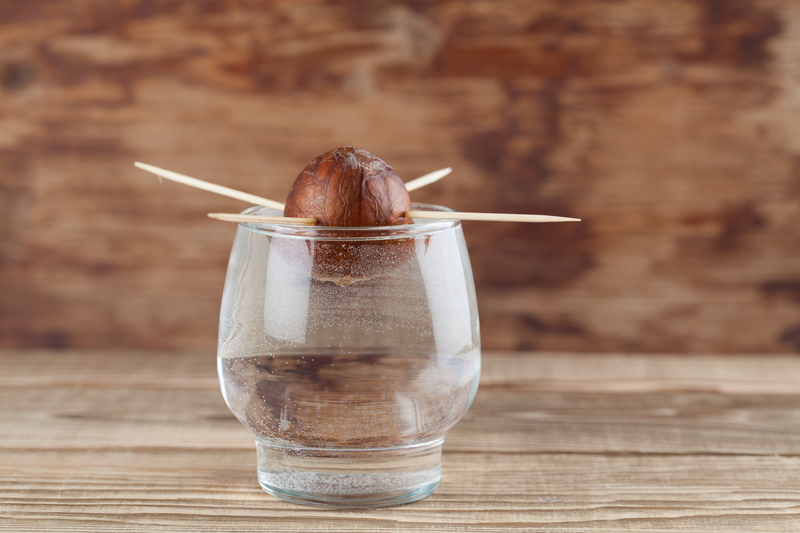Softwood Decking: Upsides and Downsides
Posted on 18/09/2024
Introduction to Softwood Decking
Softwood decking has become an increasingly popular choice for homeowners looking to enhance their outdoor living spaces. This type of decking, typically made from coniferous trees like pine, fir, and spruce, offers a cost-effective and aesthetically pleasing option for your deck. However, like any material, it comes with its own set of advantages and disadvantages. In this article, we'll delve into the various aspects of softwood decking to help you make an informed decision for your next home improvement project.

Advantages of Softwood Decking
One of the primary reasons why many people opt for softwood decking is its affordability. Compared to hardwood decking, softwood is generally less expensive, making it an attractive option for budget-conscious homeowners. Additionally, softwood decking is relatively easy to work with due to its lighter weight and softer texture. This makes it easier to cut, shape, and install, potentially saving you money on labor costs if you decide to DIY your decking project.
Another advantage is the naturally appealing aesthetic of softwood. Softwoods often have a pleasing grain pattern and can be stained or painted to match your desired look. This versatility allows you to achieve a range of styles, from rustic to modern, without breaking the bank.
The Downsides of Softwood Decking
While there are many benefits to using softwood decking, there are also some downsides to consider. One of the most significant drawbacks is its durability. Softwood is generally less resistant to wear and tear, as well as weather elements like rain, snow, and UV rays. This means that softwood decking may require more frequent maintenance and treatment compared to hardwood decking.
Another downside is susceptibility to pests and rot. Since softwood is softer and more porous, it can be more easily penetrated by insects like termites and wood-boring beetles. This can compromise the structural integrity of your deck over time if proper precautions are not taken.
Maintenance Requirements for Softwood Decking
To extend the lifespan and maintain the appearance of your softwood deck, regular maintenance is essential. This typically involves cleaning the deck periodically to remove dirt, debris, and mildew. Applying a water-repellent finish or sealant can also help protect the wood from moisture and UV damage. It's advisable to reapply these protective coatings every one to two years, depending on the climate and level of use.
If you notice any signs of damage, such as splintering or warping, it's crucial to address them immediately. Sanding down rough areas and replacing any damaged boards can help prevent further deterioration. Investing in quality deck furniture and accessories designed for outdoor use can also help minimize wear and protect the wood from excessive strain.
Environmental Considerations
Softwood decking is generally considered a more sustainable option compared to some other materials. Softwood trees, like pine and spruce, grow relatively quickly, making them a renewable resource. Moreover, many softwood decking products come from responsibly managed forests and carry certifications like FSC (Forest Stewardship Council), ensuring that they meet specific environmental standards.
That said, it's essential to be mindful of the treatments and finishes applied to softwood decking. Some treatments can contain harmful chemicals, which might negate the environmental benefits. Opting for eco-friendly treatments can help minimize your decking project's overall environmental impact.
Cost Considerations
While softwood decking is initially less expensive, the ongoing maintenance costs can add up over time. Repeated treatments, stains, and repairs might make it more costly in the long run compared to low-maintenance materials like composite decking. Budgeting for these ongoing expenses is vital to ensure that you're making the most cost-effective decision for your decking needs.
Conclusion
Overall, softwood decking presents both upsides and downsides. Its affordability, ease of installation, and aesthetic versatility make it an appealing choice for many homeowners. However, its lower durability and higher susceptibility to pests and environmental damage require regular maintenance and care.
Pros and Cons of Softwood Decking
**Pros:**
- Affordable
- Easy to work with
- Aesthetically versatile
- Renewable resource
**Cons:**
- Less durable
- Susceptible to pests and rot
- Requires regular maintenance

Tips
1. **Choose Treated Softwood:** Opt for pressure-treated softwood to improve resistance to pests and rot.
2. **Regular Maintenance:** Schedule periodic cleaning and reapply protective finishes as needed.
3. **Inspect Regularly:** Keep an eye out for any signs of damage and address issues promptly.
4. **Eco-friendly Treatments:** Use environmentally friendly stains and sealants to minimize environmental impact.
Takeaways
- Softwood decking is an affordable and aesthetically pleasing option but requires regular upkeep.
- Opt for sustainably sourced and treated softwood to enhance durability and minimize environmental impact.
- Regular maintenance and prompt repairs can significantly extend the lifespan of your softwood deck.
In conclusion, softwood decking can be a great choice for your outdoor space if you're willing to commit to regular maintenance and care. By considering both the upsides and downsides, you can make an informed decision that best meets your needs and budget.

